
As the precision of PCB circuit board line production increases, issues of open and short circuits during line production have become significant factors affecting product qualification rates. Typically, actions to improve line qualification rates consider factors such as dry film adhesion and exposure energy. From the perspective of the entire system’s production, the flatness of the board surface after electroplating is a fundamental and direct reason affecting line yield.
For filled hole boards using vertical continuous electroplating, surface pitting is a major issue. Pits in the graphic area can significantly lead to line openings, with poor oil removal causing pit sizes to fluctuate around 50um. This has little impact on 4mil lines but becomes pronounced for 3mil lines. This phenomenon is increasingly drawing attention from various PCB manufacturers. Therefore, this article focuses on improving the defects of electroplated surface pitting to enhance line production qualification rates by addressing the adverse effects of surface pitting on line production through process improvements in the vertical continuous electroplating workflow.
There are many causes of surface pitting on PCB circuit boards, such as anti-plating, pinholes, and scratches. By collecting and classifying defects, as shown in Table 1 and Chart 1, the distribution of different pit defects can be observed.

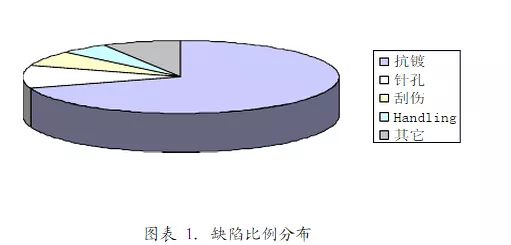
PCB Circuit Board Electroplating
According to the above defect ratio analysis, anti-plating is the main cause of pitting. Initial improvements mainly targeted surfaces with obvious debris, but a relatively high proportion of pits remained. Further analysis suggests that the most likely factor causing surface anti-plating is the contamination of organic substances on the board surface before electroplating, including externally introduced grease (such as fingerprints), mineral oils (such as conductive oils), and organic substances adsorbed on the board from previous processes. These organic substances may contribute more covertly and significantly to line openings. The most likely source is the chemicals from the PTH process that are difficult to remove between the chemical copper layers.
The PTH chemical copper bath contains complexing agents (EDTA), stabilizers (pyridine), and other substances. These substances have a strong affinity for copper ions, making them difficult to remove once adsorbed on the board surface, and they are only highly soluble in alkaline environments.
Since it is impossible to avoid the presence of organic substances on the PCB circuit board surface, we need to reduce the content of organic substances in subsequent processing. This led to the idea of introducing an alkaline degreaser before electroplating.
1. Introduction of Alkaline Degreasing
Typically, acidic degreasing systems are used in pre-treatment before electroplating, as the electroplating solutions are all acidic. Few people use alkaline degreasing. However, analysis shows that compared to acidic degreasers used in VCP pre-treatment, alkaline degreasing has better cleaning ability, especially for PTH chemical residue and oil contamination during PCB handling. Additionally, the VCP line has hot water washing and acid immersion after degreasing, which ensures that the alkaline degreaser is completely cleaned before entering the electroplating bath, preventing contamination of the bath solution. Furthermore, alkaline degreasing does not corrode PTH chemical copper as much as acidic degreasing, thus ensuring the integrity of the chemical copper. Therefore, alkaline degreasing was chosen.
The comparison of the components and functions of both is shown in the table below:
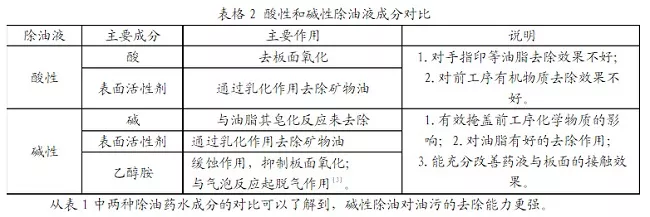
2. Experimental Testing
2.1 Experimental Process Design
…→ Board Loading → Degassing → Alkaline Degreasing (Acidic Degreasing) → DI Water Wash → Acid Wash → Pre-plating → DI Water Wash → Micro-etching → DI Water Wash →…
2.2 Experimental Results
Two batches of test boards, Panel 1 and Panel 2, were pre-treated using acidic and alkaline degreasing methods, respectively, and their line production yields were checked, yielding the results shown in Chart 2.
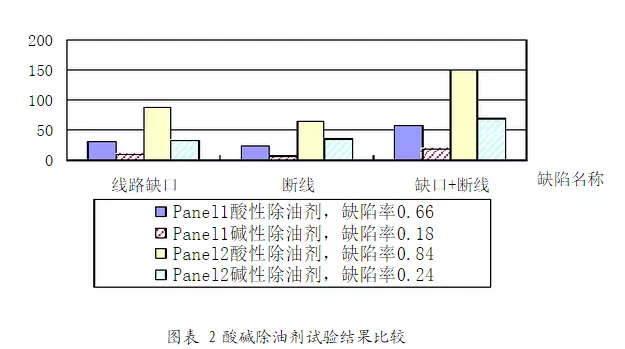
Panel 1 and Panel 2 have different line difficulties, resulting in a significant difference in defect numbers.
From the data shown in Chart 2, it can be seen that after using alkaline degreasing, the defects of line openings have significantly improved, with alkaline degreasing effectively reducing the defect rate by over 70% compared to acidic degreasing.
Additionally, the experiment compared the defect rates of boards treated with degreasing concentrations of 5% and 7.5%, which were 45% and 35%, respectively, indicating that a higher concentration of degreasing solution improves defect reduction.
3. Production Application
In a vertical continuous electroplating line, alkaline degreasing was trialed to replace the original acidic degreasing, while tracking the defect rates of line openings in a specific online production circuit board from June to December.
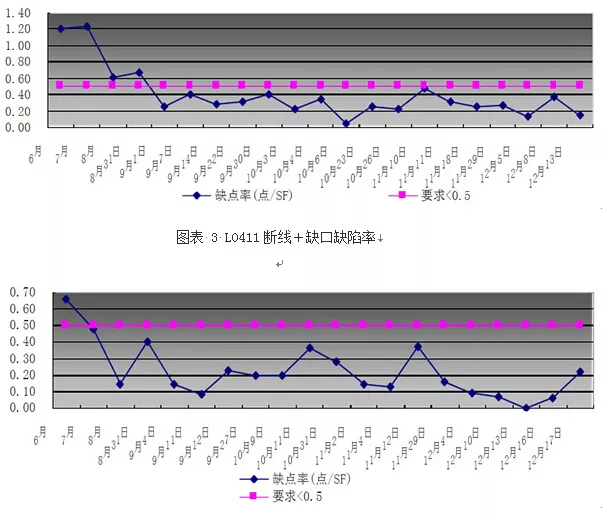
From the trend of defect rate changes shown in Chart 3 and Chart 4, it can be observed that starting from August, after the introduction of alkaline degreasing pre-treatment, the defect rate of line openings in this model of PCB circuit board has significantly decreased.
Due to the success of improving line openings and defects by changing the pre-treatment chemicals in VCP1# line, the alkaline degreaser will be applied and promoted to all vertical continuous electroplating line pre-treatments.
4. Conclusion
The pitting on the board surface after electroplating directly causes line openings in subsequent production processes, with anti-plating being the main cause of pitting. Through analysis, it was found that the board surface adsorbs organic substances such as grease during the previous processes, and these organic impurities cannot be removed by the existing acidic degreasers, leading to surface anti-plating. The use of alkaline degreasers can effectively dissolve organic substances on the board surface.
Experiments have proven that compared to acidic degreasing, using alkaline degreasers can reduce line defect rates by over 70%. After promoting this pre-treatment method to the production line and monitoring with SPC, a significant downward trend in line production defects has been observed after changing the pre-treatment method. Alkaline degreasing has now been promoted for use across all vertical continuous electroplating lines. Continuous monitoring of line production effects after alkaline degreasing will be conducted, and this improvement measure is believed to be a shortcut to stabilizing and increasing the qualification rate of increasingly refined PCB circuit board products.

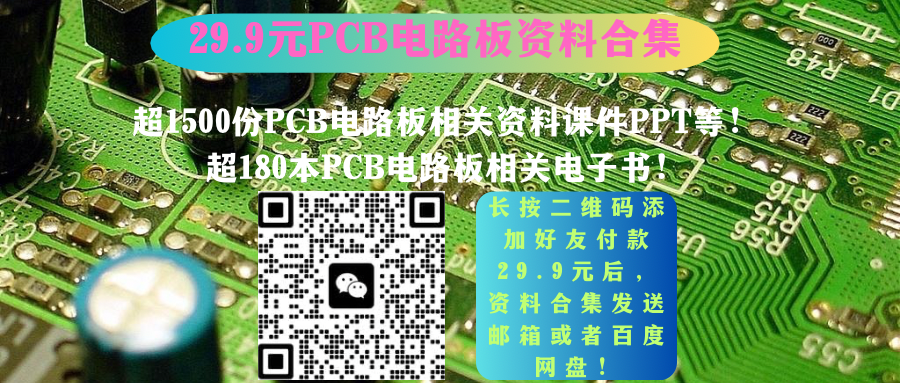
Screenshots of Some Electronic Books
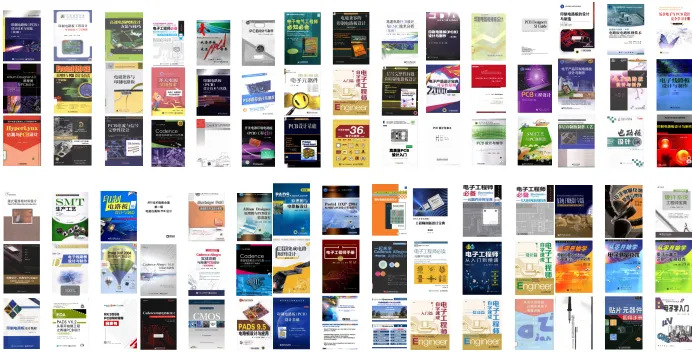
【Complete Set of Hardware Learning Materials Collection】
